DIY Homemade Hair Growth Oil Recipe: Natural Remedies
If you want a natural way to promote hair growth, you should give DIY homemade hair growth oil a try!
This is a great option if you are looking for an affordable and easy way to improve the health of your hair while encouraging hair growth.
In this blog post, I will discuss the benefits of using a homemade hair growth oil, go over the available ingredients, explain how to use homemade hair growth oil, and provide a recipe to make your own!
This post may contain affiliate links. Read disclosure here
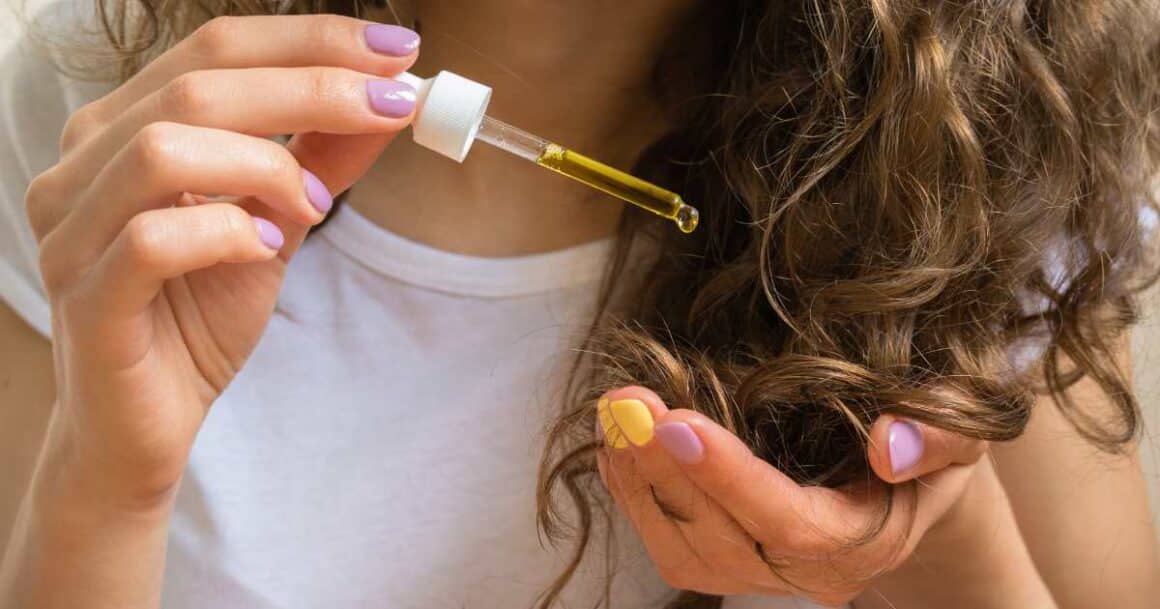
The Best DIY Homemade Hair Growth Oil
What is hair growth oil?
Hair growth oil is a type of oil that is designed to promote hair growth as well as promote a healthy scalp.
How does hair growth oil work?
The ingredients in hair growth oil work together to nourish the scalp and promote hair growth.
The oils can help improve scalp circulation, provide essential nutrients, and moisturize the scalp.
How does hair growth oil promote hair growth?
Hair growth oil can help to increase circulation to the scalp, which in turn brings more nutrients to the hair follicles.
This helps to nourish and strengthen the hair, resulting in faster growth.
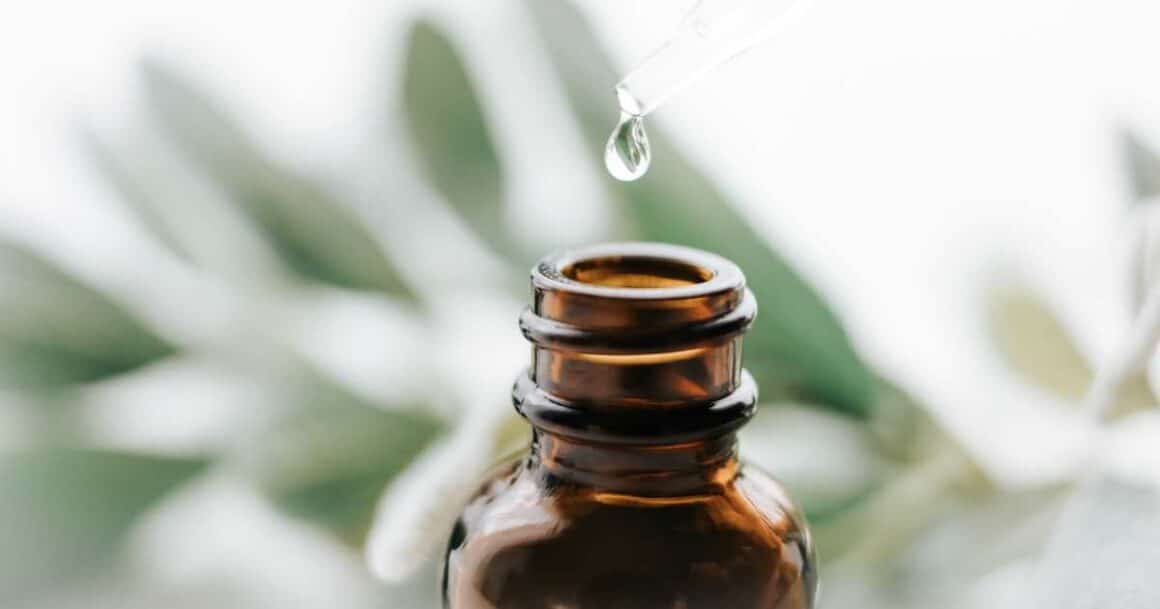
The benefits of using a homemade DIY hair oil
Encourages hair growth
Using hair oil along with scalp massage increases book circulation. Essential oils can increase blood flow and stimulate healthy hair growth.
Strengthens hair
Oil increases hair’s elasticity, making it less prone to breakage and damage like split ends.
Moisturizing
Homemade hair oils can keep your hair hydrated and strong while preventing breakage.
Oils with plenty of fatty acids and vitamin E create a barrier around the hair shaft that stops it from losing moisture and humidity-induced frizz.
All Natural
Homemade hair oil is free of mineral oils, silicones, synthetic solubilizers, parabens, artificial fragrances, and other ingredients in many hair growth oils today.
Affordable
Making your own DIY homemade hair growth oil is cost-effective and contains only your chosen ingredients.
Fast + Easy to make
DIY homemade hair growth oil is so easy to make takes only a few minutes!
Oils Explained: Carrier oils + Essential Oils for Hair Growth Treatment
Carrier oils are used as the foundation in skin and haircare treatments
Essential oils are very potent, so carrier oils are used as a base for essential oils such as tea tree, peppermint, and lavender to weaken them so they can be applied directly on the skin without causing any irritation.
Most carrier oils are unscented or lightly scented and don’t interfere with an essential oil’s therapeutic properties.
They may be used alone or with other oils to nourish skin and hair.
Carrier Oils for DIY Homemade Hair Growth Oil
Apricot Kernel Oil
Apricot kernel oil is an emollient oil high in fatty acids and vitamin E.
It absorbs easily into the skin and has a slightly sweet, nutty scent.
You can buy edible or apricot kernel oil for cosmetic use .
Coconut oil
Coconut oil is one of the most popular oils for skin and hair!
Coconut oil is an edible substance that comes from the meat of coconuts. You can find it either refined or unrefined in stores.
Unrefined coconut oil hasn’t been processed with chemicals, meaning it keeps its original scent and taste of coconuts.
Uses: Coconut oil has so many uses! Coconut oil is ideal for skin and hair care products because it contains nourishing fatty acids and antioxidants.
This article is a great read if you want to learn more about the benefits of coconut oil.
Sweet Almond Oil
Sweet along oil has a robust, nutty smell.
The oil is light, penetrates the skin easily, and works wonders as a moisturizer for dry skin.
Uses: Sweet almond oil is one of the most popular carrier oils for skin care. It’s excellent in massage oils, bath oils, and soaps.
Olive oil
Olive oil has many health benefits and is a popular edible oil, but it is also used in aromatherapy as a carrier oil.
Extra-virgin olive oil is the preferred variety for scent and skin care preparations.
Uses: Olive oil is great for moisturizing dry skin and is packed with fatty acids and plant sterols.
You can use olive oil as a carrier oil for massage, facial cleansers, hair care, and homemade soaps.
Argan Oil
Argan oil is edible and traditionally nourishes the body inside and out.
It has a nutty aroma and contains vitamins A and E and monounsaturated fatty acids.
Uses: Argan oil can help treat dry skin, hair, wrinkles, and inflammation. This makes it a terrific carrier oil for general skin care and massage oils.
Rosehip Oil
After a Rosa rubiginosa or Rosa moschata, the bush’s flower dies and drops its petals; the seed left behind is called a rosehip.
To get rosehip oil, these seeds are pressed. Even though it comes from roses, rosehip oil has no floral scent. Instead, it smells more like nuts or earth.
Uses: Rosehip oil is rich in nutrients like vitamins A and C.
Vitamin A helps to reduce wrinkles and improve the overall appearance of aging skin, while both vitamins can help repair damage from sun exposure.
Uses: Rosehip oil can be used independently or combined with other ingredients to make DIY dry skin remedies, massage oils, and moisturizers.
Grapeseed oil
Grape seed oil contains high levels of vitamin E, which has been linked to skin healing and reducing wrinkles. However, scientific research on this matter is inconclusive.
Uses: Grape seed oil is a great choice for making body and massage oils because it’s lightweight, easily absorbed by the skin, and has a neutral scent.
Avocado oil
Avocado oil is a heavy, thick edible oil made from avocados. It has a nutty aroma and can help heal dry, damaged skin.
Uses: Avocado oil can be a carrier oil for dry skin remedies and body creams.
Sunflower oil
Sunflower oil is an edible oil extracted from sunflower seeds. It has a neutral odor.
Sunflower oil is a skin barrier against toxins and germs that cause infection, making it a great choice for irritated skin.
Uses: Sunflower oil can help soften skin, moisturize skin, and soothe irritation, so add this carrier oil to your massage oils or use it for general skin care.
Castor oil
Castor oil is a natural oil used for centuries for medicinal and industrial purposes. The main use of castor oil is to lubricate and protect the skin.
Castor oil is rich in omega-9 fatty acids, which are beneficial for the skin. The oil is also a good source of vitamin E, minerals, and proteins.
Uses: Castor oil is often used as a natural remedy for skin conditions such as acne, eczema, and psoriasis. It is also used to treat dry scalp and hair loss.
Castor oil is a wonderful carrier oil for massage, or add it to your favorite lotion or cream.
Jojoba oil
Jojoba oil comes from the seeds of the jojoba plant. It has a delicate, nutty aroma.
Technically, jojoba isn’t an oil but a wax with powerful moisturizing properties. It’s thought to mimic sebum, the skin’s natural oil closely.
Uses: Jojoba oil absorbs easily in the skin and doesn’t clog pores. This makes it a good carrier oil option for massage, facial moisturizers, and bath oils.
Sesame Oil
Sesame Oil contains vitamins E and B and minerals such as calcium, magnesium, and phosphorus. It is an emollient if used in dilution with other carrier oils.
This oil is a popular massage and aromatherapy oil.
Uses: Sesame oil can be used as a carrier oil but is most popular as a massage oil and oil to moisturize dry skin.
Essential Oils for DIY Homemade Hair Growth Oil
Peppermint Oil for Hair Growth Oil
Peppermint oil is one of the most popular essential oils for hair growth.
It’s known for its ability to soothe muscles and relieve pain. It can also help to improve circulation and has anti-inflammatory properties.
In addition, peppermint essential oil is a powerful antibacterial agent that can help to keep the skin clear and free of blemishes.
Studies say peppermint essential oil can stimulate growth and prevent dandruff when used in hair care products.
Uses: Peppermint essential oil can be used for aromatherapy, peppermint aids in bringing down your stress levels, and can be mixed with a carrier oil DIY homemade recipes for skin care and hair care.
Related: The Best Vitamins for Eyelash Growth
Pumpkin Seed Oil for Hair Growth Oil
Pumpkin seed oil is rich in unsaturated fatty acids, especially oleic and linoleic acid, and vitamin E, all of which have the potential to aid in hair growth.
Moreover, pumpkin seed oil can also block androgens3, which ultimately causes female or male-pattern hair loss, also called androgenetic alopecia.
Learn more about Pumpkin Seed oil and hair growth here.
Rosemary Oil for Hair Growth Oil
Rosemary oil can produce healthier hair, eliminate itchiness and build-up, and improve blood circulation around the hair follicles.
Additionally, rosemary oil contains anti-inflammatory and antibacterial properties to protect your hair from fungal and bacterial infections.
Uses: Rosemary oil is commonly used in aromatherapy, skin and hair care, and more.
This is a great article on rosemary oil if you want to learn more.
Cedarwood Essential Oil for Hair Growth
Cedarwood essential oil has a woodsy scent and can help to improve circulation.
Sources say that cedarwood essential oil can help with hair growth and reduce hair loss.
This is because it might balance the oil-producing glands in the scalp. Cedarwood extract also has antifungal and antibacterial properties.
This means that it could help treat conditions like dandruff or hair loss.
One study used a mixture of lavender, rosemary, and cedarwood on people with alopecia areata (hair loss).
Tea Tree Oil for Hair
Tea tree oil is an effective antiseptic oil that can help to keep the scalp clean and healthy. It can treat itchy scalp, dandruff, and other fungal and bacterial infections.
This oil is very potent and should be used with carrier oil on the scalp and skin.
Uses: Tea Tree oil, along with a carrier oil, can be used for DIY recipes for hair treatments and masks, soaps, and massage oils.
Tea Tree oil is also used in aromatherapy to add mental clarity.
Lavender Oil for Hair Growth Oil Recipe
Lavender oil is another very popular essential oil. Known for its beautiful, calming scent, lavender oil can be used for many things, including hair growth.
Lavender oil can help to promote hair growth by Increasing circulation to the scalp – Increased circulation brings more nutrients to the hair follicles, resulting in faster growth.
Because of its antimicrobial properties, lavender oil may also help reduce dandruff, itchy scalp, and other infections.
Uses: Lavender oil can be used in aromatherapy, skin and hair treatments, and more.
Lemon Oil for Hair Growth
Applying lemon oil is an excellent way to strengthen hair follicles and promote growth. Lemon Oil also cleanses the scalp and helps kill the fungus and bacteria present on your scalp.
Beware that lemon oil can lighten hair!
Home Remedies for Hair Growth
This healthy, do-it-yourself scalp oil for hair growth contains abundant essential oils with anti-inflammatory and anti-bacterial properties.
By combining this hair growth oil with a soothing and stimulating scalp massage at least twice a week, you will not only improve the health of your scalp but also begin to see healthier and fuller hair growth.
The Best DIY Homemade Hair Growth Oil Recipe
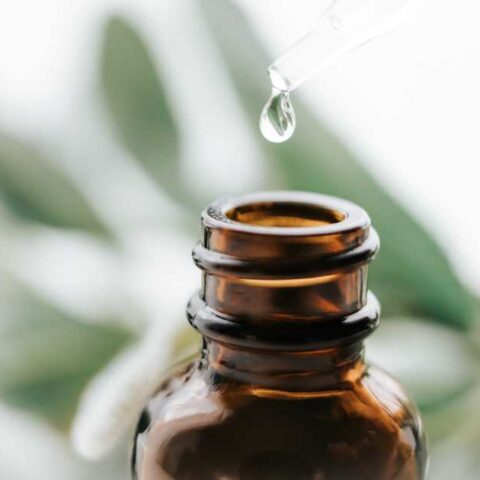
Homemade Hair Growth Oil
Use this healthy, homemade hair growth oil at least twice a week, for healthier and fuller hair.
Ingredients
- 3-4 Tbsp Favorite Carrier Oil (I like jojoba or coconut oil)
- 2 drops of rosemary or Lavender essential oil.
- 2 drops of cedarwood essential oil or peppermint essential oil.
- Optional: Add 4 Tablespoons of Distilled Water and 4 Tablespoons of Witch hazel to make a spray form.
Instructions
- Combine all ingredients in a glass jar. Shake well to combine.
- Transfer in a glass dropper bottle or a glass spray bottle (if you’ve added water with hazel.
- Store oil in a cool, dark place.
Notes
This is just one recipe for homemade hair growth oil.
Feel free to experiment with a different carrier oil and essential oil combinations to find a homemade hair growth oil that works best for you!
To get the best results from your homemade hair growth oil, massage a small amount into your scalp 2-3 times per week.
The massage will help to stimulate circulation and promote hair growth.
For added results, use a scalp massager tool to stimulate scalps’ blood flow.
Recommended Products
As an Amazon Associate and member of other affiliate programs, I earn from qualifying purchases.
Ingredients: Homemade Hair Growth Oil
- 3-4 Tbsp Favorite Carrier Oil (I like jojoba or coconut oil)
- 2 drops of rosemary or Lavender essential oil
- 2 drops of cedarwood essential oil or peppermint essential oil
- Optional: Add 4 Tablespoons of Distilled Water and 4 Tablespoons of Witch hazel to make a spray form.
Instructions:
- Combine all ingredients in a glass jar. Shake well to combine.
- Transfer in a glass dropper bottle or a glass spray bottle (if you’ve added water with hazel.
- Store oil in a cool, dark place.
This is just one recipe for homemade hair growth oil.
Feel free to experiment with different carrier oil and essential oil combinations to find a homemade hair growth oil that works best for you!
To get the best results from your homemade hair growth oil, massage a small amount into your scalp 2-3 times weekly.
The massage will help to stimulate circulation and promote hair growth.
Use a scalp massager tool to stimulate scalps’ blood flow for added results.
The Benefits of Scalp Massage
A scalp massage feels good and is good for you! That’s because it can help to increase blood circulation to the scalp, which brings nutrients and oxygen to the hair follicles.
Massaging the scalp can also help to loosen and remove built-up oil, dandruff, and other debris.
Conclusion: DIY Homemade Hair Growth Oil
The combination of essential oils in this recipe can help to improve circulation, reduce inflammation, and prevent scalp infections – all of which can promote hair growth.
If you’re looking for an all-natural way to improve your hair health and promote hair growth, try this homemade hair growth oil recipe.
You may be surprised at the results!
Thanks for reading! Have you ever made a DIY product at home? What was it?
Are you going to give the DIY hair growth oil a try? Let me know in the comments below!
Until next time,
XO, Christine

I’ve been keeping it real since 1963. 🙂
I’m a child of God, a wifey, mama, grandma, full-time creative, domestic engineer, and self-care enthusiast.
I am obsessed with all things makeup and skincare and love getting my hands dirty out in the garden, my art room, or in the kitchen, whipping up something yummy for the fam.
I’m always down to chat and love collaborating with other creatives and brands alike!
Feel free to reach out anytime!






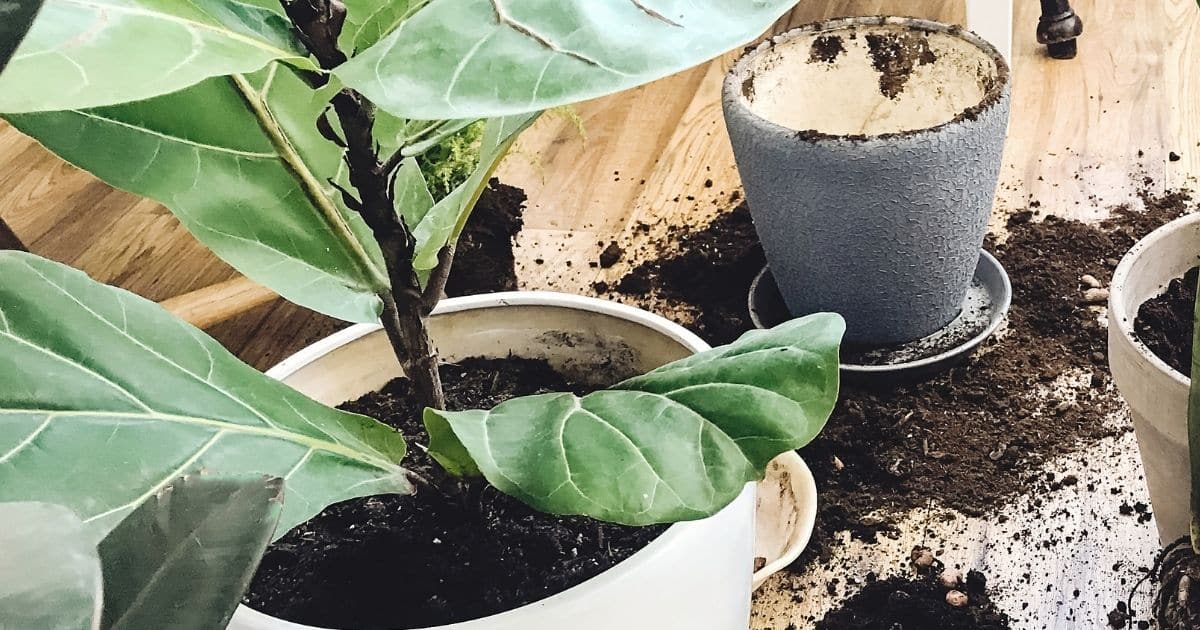
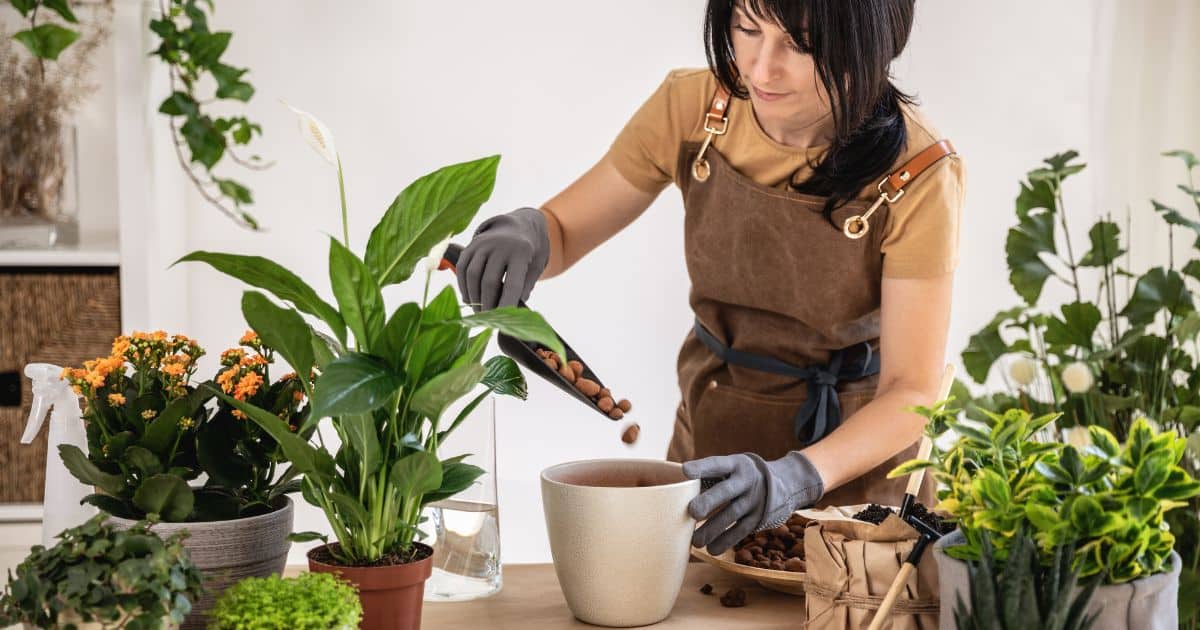
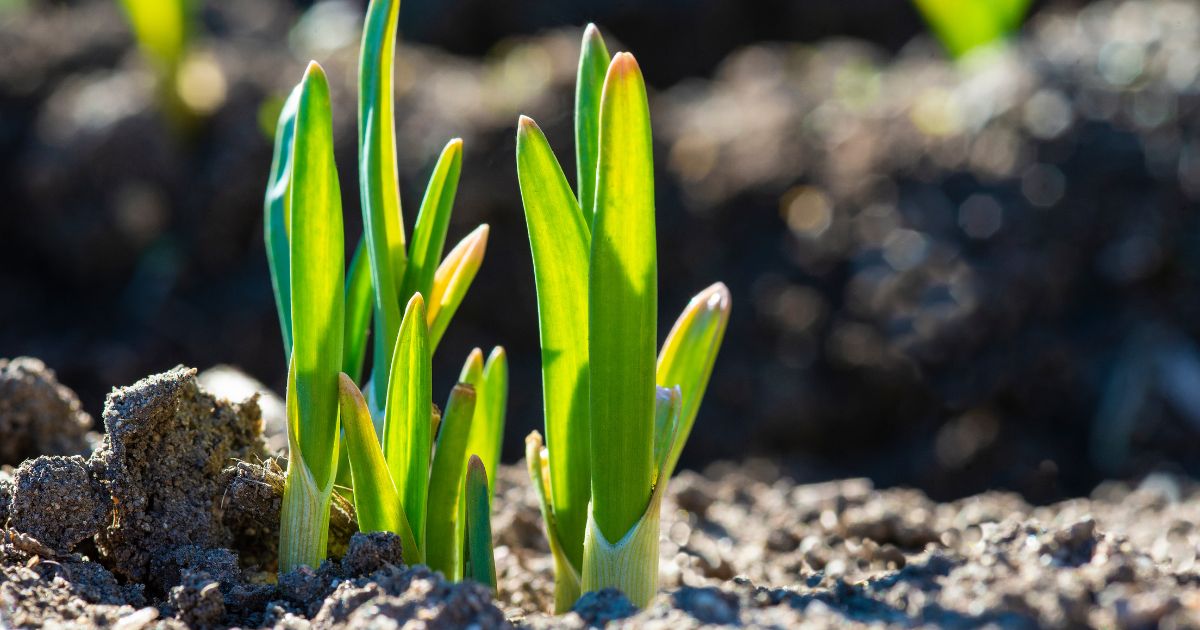
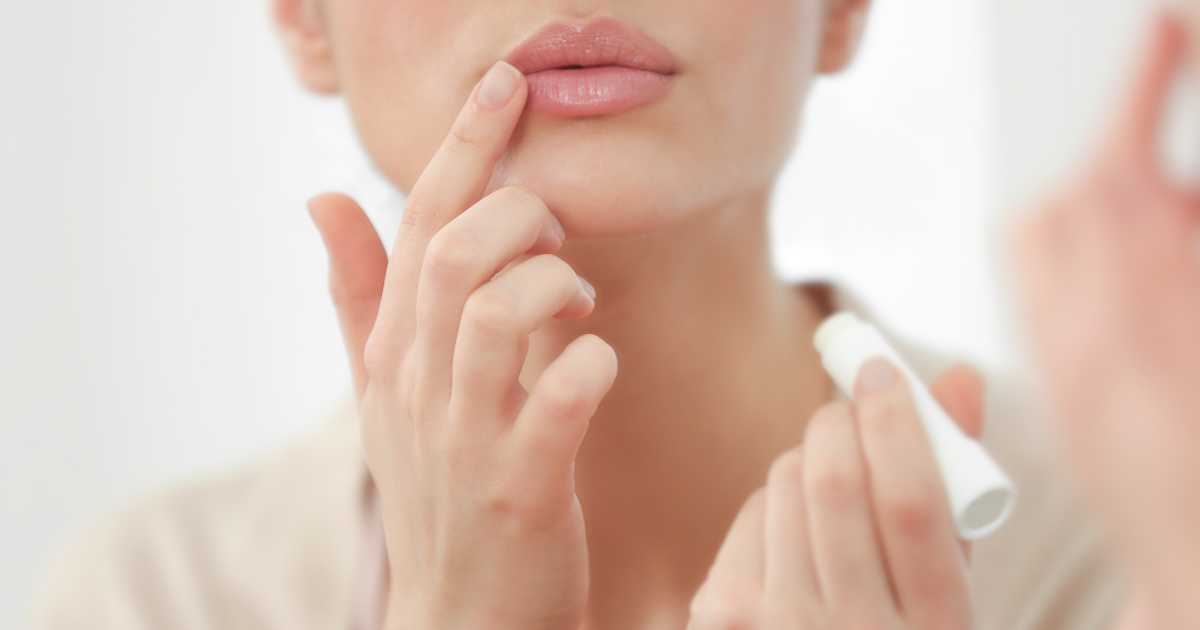
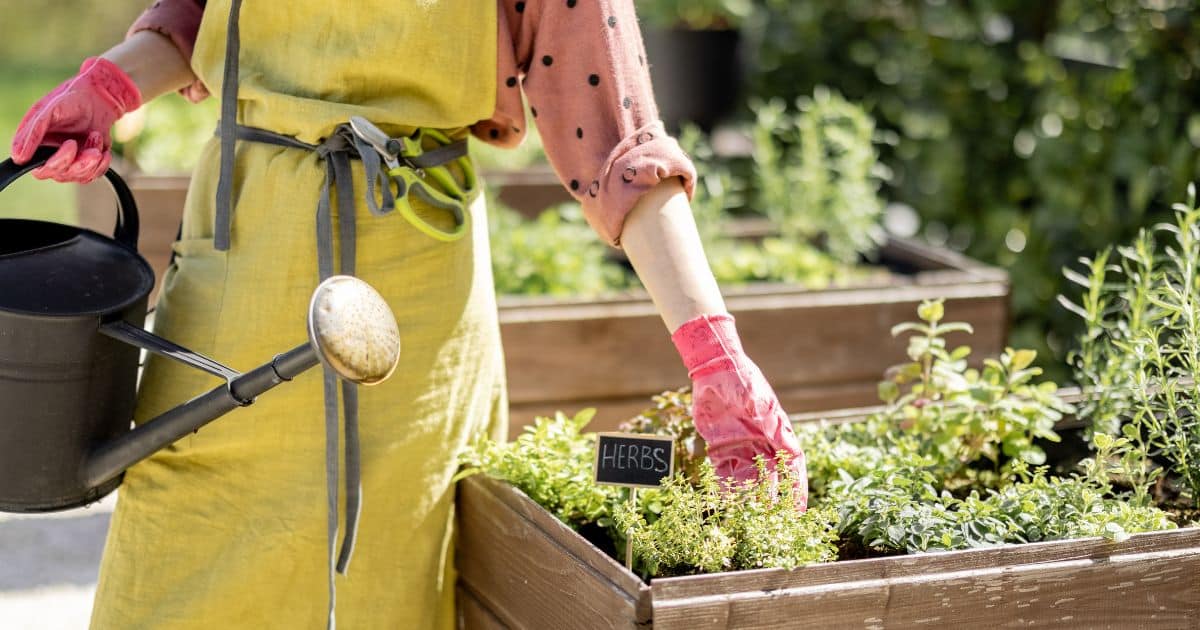
Can you leave this homemade hair growth oil on your scalp until the next time you wash your hair, or do you need to wash it out after left on scalp for certain amount of minutes?
I do it at night and leave it on overnight. You will need to shampoo in the morning because it tends to look ” greasy “. 🙂